▼ Average heat index in India on the rise [02-27-17]
 The average heat index in India is increasing significantly per decade at the rate of 0.56°C and 0.32°C in summer and monsoon respectively. The average heat index in India is increasing significantly per decade at the rate of 0.56°C and 0.32°C in summer and monsoon respectively.
This is as per a recent research by India Meteorological Department and Indian Institute of Tropical Meteorology.
Heat index is a measure of the stress placed on humans by increased levels of temperature and moisture.
The higher the heat index, the hotter the weather one feels, since sweat does not readily evaporate and cools the skin.
Of 25 mega cities analysed, 17, including Mumbai, Pune, Kolkata and Ahmedabad, have long-term average summer heat index in 'very hot category'.
The study found that Mumbai and Pune from west India are in the 'hot category' of the index in monsoon.
Most mega cities in north India, including Delhi and Amritsar, are in hot category of the heat index during the summer season and in 'very hot category' in monsoon.
'Very hot' category is considered dangerous, with health effects such as heat cramps, exhaustion and heatstroke with prolonged exposure or physical activity.
The 'hot category' requires people exposed to it to take extreme caution. The study found that 10 mega cities show significant increasing trends in monsoon heat index, including Mumbai and New Delhi.
The stilling of winds is an interesting phenomenon taking place, even as Indian megacities become unlivable.
The study used monthly average maximum temperature and relative humidity records to analyse heat index during summer and monsoon from 1951 to 2010 for 60 years.
Indian Institute of Tropical Meteorology
- The Indian Institute of Tropical Meteorology or IITM is a scientific institution based in India for expanding research in meteorology of the tropics.
- Addressing this in general with special reference to monsoon meteorology of India, IITM is based in Pune.
- Address: Dr. Homi Bhabha Road, Pashan, Panchawati, Pune, Maharashtra 411008
- Founded: 1962
|
▼ Rate of retreat of Gangotri glacier slows down [02-24-17]
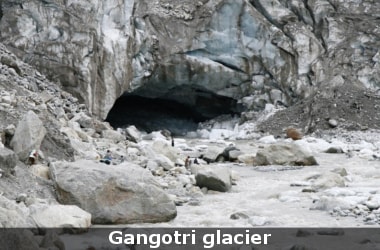 Rate of retreat of Gangotri glacier has slowed down to 11 metres since 2008 from the maximum of 35 metres recorded in 1974. Rate of retreat of Gangotri glacier has slowed down to 11 metres since 2008 from the maximum of 35 metres recorded in 1974.
This is according to experts at the Almora-based GB Pant National Institute of Himalayan Environment and Sustainable Development (GBPNIHESD) who conducted a study of the glacier located in Uttarkashi from 2008 till 2016.
While the slowing down of the rate of recession is good news, since it means that the glacier is not melting at a rate fast enough, scientists said that the worrying part is that the base of the 30-km long glacier is thinning.
As a result, it has become more fragile.
Gangotri is a gigantic glacier extending over a total area of 144 sq km. Because of its huge size, it takes longer to show any change with regard to climatic patterns.
But there are instances of indirect impact which have been caused due to the prevalence of small glaciers situated above Gangotri.
When temperatures rise, these glaciers melt fast due to their small size and the water generated from them flows down and seeps into the crevasses of the Gangotri glacier, causing them to melt from the bottom.
As the small glaciers are situated on the right side of the Gangotri glacier, it is the right side of the base that is most impacted.
Due to thinning of its shape, Gangotri glacier has become vulnerable to fragmentation which would ultimately lead to breakage and loss of water, happening and creating fissures.
Gangotri Glacier
- Gangotri Glacier is located in Uttarkashi District, Uttarakhand, India.
- This is in a region bordering China.
- This glacier, one of the primary sources of the Ganges, is one of the largest in the Himalayas.
- It has an estimated volume of over 27 cubic kilometres.
|
▼ Amazon basin's newest river Rio Hamza! [02-21-17]
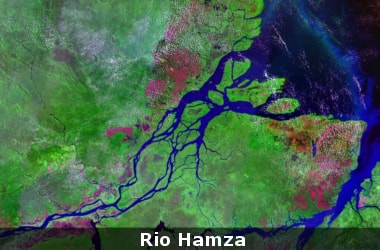 Covering more than 7 million square kilometres in South America, the Amazon basin is one of the biggest and most impressive river systems in the world. Covering more than 7 million square kilometres in South America, the Amazon basin is one of the biggest and most impressive river systems in the world.
Brazilian scientists have found a new river in the Amazon basin – around 4km underneath the Amazon river.
The Rio Hamza, named after the head of the team of researchers who found the groundwater flow, appears to be as long as the Amazon river but up to hundreds of times wider.
Both the Amazon and Hamza flow from west to east and are around the same length, at around 6,000km.
Amazon 1km to 100km in width, the Hamza ranges from 200km to 400km.
The underground river starts in the Acre region under the Andes and flows through the Solimões, Amazonas and Marajó basins.
It is opening out directly into the depths of the Atlantic Ocean.
The Amazon flows much faster than the Hamza, however, draining a greater volume of water.
Around 133,000 cubic metre of water flow through the Amazon per second at speeds of up to 5 metres per second.
The underground river's flow rate has been estimated at around 3,900 cubic metre per second and it barely inches along at less than a millimetre per hour.
The researchers used a mathematical model to predict the presence of the underground river, based on the measured changes in temperature down the wells.
Facts About Rio Hamza
- The evidence of the river’s existence was discovered by a group of scientists from Brazil National Observatory’s geophysics department.
- The group was led by Valiya Mannathal Hamza and so, the river is named after him.
- The river is assumed to flow some 13,000 feet beneath the river Amazon.
- The river is identical to the Amazon in terms of its length and the direction.
- Hamza is around 3700 miles long and flows west to east.
- Water in Amazon flows at 5 meters per second but in Hamza, it flows at a speed of less than 1 millimetre per hour.
- Beneath the Andes is the Acre region where the Rio Hamza starts and flows through Solimões basin, Amazonas basin and Marajó basin and eventually opens directly into the depths of Atlantic.
- Scientists opine that the relatively low salinity of water where Amazon meets the Atlantic is probably due to Rio Hamza.
The river was discovered by using the data collected from 241 abandoned deep wells dug in Amazon region.
|
▼ Lancet: Air Pollution kills 2 every minute in India [02-20-17]
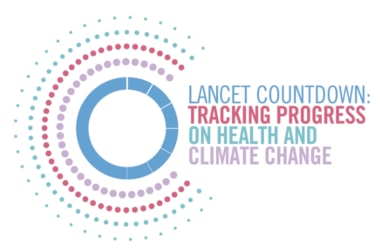 Air pollution is killing two people in India every minute, with the country's environment turning more toxic by the day, says a new study published in the journal 'The Lancet'. Air pollution is killing two people in India every minute, with the country's environment turning more toxic by the day, says a new study published in the journal 'The Lancet'.
According to the study, some of the worst polluted cities of the world are in India.
The study based on 2010 data, estimates that, globally, 2.7-3.4 million preterm births may be associated with exposure to PM 2.5.
South Asia, with 1.6 million preterm births, is the worst hit, the study added
The review by 48 scientists and experts from 16 international institutions has warned that air pollution has adverse health effects on people .
'The Lancet Countdown: Tracking Progress on Health and Climate Change' - a review of significant scientific studies - refers to the recent International Energy Agency (IEA) report which had collated PM 2.5 exposure in lower, middle and upper income countries.
In the report, Patna and Delhi figure among the most polluted cities, both having an annual PM 2.5 concentration of more than 120 micrograms per cubic metres - about 12 times the WHO guideline.
The WHO annual PM 2.5 guideline is 10 micrograms per cubic metres. This IEA report had sourced data from the World Health Organisation (WHO's) urban air quality database of 2016.
An estimated 18,000 people die every day because of exposure to ambient and household air pollution, making it the world's largest single environmental health risk.
Ambient air pollution is particularly pertinent in urban areas, but it also affects non-urban populations as per the Lancet Countdown.
About 80% of people living in urban areas around the world are exposed to air pollution levels in excess of WHO guidelines.
This number rises to 98% for urban populations in low-income and middle-income countries according to the countdown.
Household air pollution that results from use of solid fuels and other biomass contributes to around 4.3 million deaths annually, which are related to pneumonia, stroke, lung cancer, heart disease, and chronic obstructive pulmonary disease (COPD).
Lancet Countdown: Know More
- The Lancet Countdown will report annually in The Lancet journal.
- The institutions involved in the project includes bodies such as University College London, Tsinghua University and the Centre for Climate & Security among others.
- They have collaborated with the World Health Organization (WHO) and the World Meteorological Organisation (WMO) too.
- The report underlines that air pollution and climate change are related and addressing air pollution will have climate change benefits too.
|
▼ Scientists discover banned chemicals in deep ocean fauna [02-16-17]
 Scientists for the first time have found high levels of human-made pollutants, including chemicals that were banned in the 1970s, in the tissues of marine creatures dwelling in the deepest oceans of the Earth. Scientists for the first time have found high levels of human-made pollutants, including chemicals that were banned in the 1970s, in the tissues of marine creatures dwelling in the deepest oceans of the Earth.
These chemicals were discovered after sampling amphipods from the Pacific Ocean’s Mariana and Kermadec trenches, which are over 10 km deep and 7,000 km apart.
Scientists found presence of extremely high levels of Persistent Organic Pollutants (POPs) in the organism’s fatty tissue.
These POPs include polychlorinated biphenyls (PCBs) and polybrominated diphenyl ethers (PBDEs) which are commonly used as electrical insulators and flame retardants.
These banned pollutants are invulnerable to natural degradation and persist in the environment for decades.
They may have been released into the environment through industrial accidents.
Pollutants may have found their way to deep trenches through contaminated plastic debris and dead animals sinking to bottom of ocean.
Here they were consumed by amphipods and other fauna.
These sampled amphipods had levels of contamination similar to that found in Suruga Bay, one of the most polluted industrial zones of the north-west Pacific.
Thus, this research shows that the remote and pristine oceanic realm which was earlier considered safe from human impact is not safe.
|
▼ State of Global Air 2017: India high on air, ozone pollution [02-15-17]
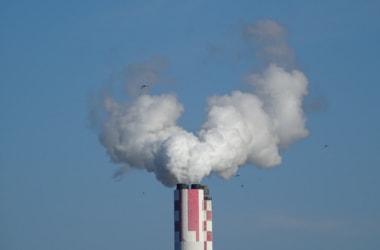 According to the State of Global Air 2017 report, as many as 2.54 lakh deaths occurred in 2015 on account of exposure to ozone and its impact on chronic lung disease. According to the State of Global Air 2017 report, as many as 2.54 lakh deaths occurred in 2015 on account of exposure to ozone and its impact on chronic lung disease.
India accounts for the highest number of premature deaths due to ozone pollution, its toll 13 times higher than Bangladesh's, and 21 times higher than Pakistan's
92% of the world's population lives in areas with unhealthy air.
With more than 2,000 researchers, the report factored in the role of an extensive set of behavioural, dietary and environmental risk factors for more than 300 diseases in 195 countries from 1990.
India's worsening air pollution caused some 1.1 million premature deaths in 2015 and the country now "rivals China for among the highest air pollution health burdens in the world," as per the report.
The special report on 'global exposure to air pollution and its disease burden' noted that the number of premature deaths in China caused by dangerous fine particulate matter, known as PM2.5, has stabilised in recent years but has risen sharply in India.
It also said that both the countries together were responsible for over half of the total global attributable deaths.
India had registered an alarming increase of nearly 50% in premature deaths from particulate matter between 1990 and 2015.
The State of Global Air 2017 is the first of a new series of annual reports and accompanying interactive website, designed and implemented by the Health Effects Institute.
This is in cooperation with the Institute of Health Metrics and Evaluation (IHME) at the University of Washington and the University of British Columbia.
The IHME is an independent population health research center that publishes the annual Global Burden of Diseases -- a systematic scientific effort to quantify the magnitude of health loss from all major diseases, injuries, and risk factors in populations across the world.
Its results are published every year.
US has experienced a reduction of about 27% in average annual population exposures to fine particulate matter with smaller declines in Europe.
Yet some 88,000 Americans and 258,000 Europeans still face increased risks of dying early due to PM levels today.
The report noted that the highest concentrations of combustion-related fine particulate matter were in South and Southeast Asia, China and Central and Western Sub-Saharan Africa in 2015.
These are the countries where household solid fuel use, coal-fired power plants, transportation, and open burning of agricultural and other wastes were among the most important contributors to outdoor air pollution.
"The Global Burden of Disease leads a growing worldwide consensus - among the WHO, World Bank, International Energy Agency and others - that air pollution poses a major global public health challenges.
The study finds that increasing exposure and a growing and ageing population have meant that India now rivals China for among the highest air pollution health burdens in the world.
Both countries are facing some 1.1 million early deaths from air pollution in 2015.
It said the long-term exposure to fine particulate matter -- the most significant element of air pollution -- contributed to 4.2 million premature deaths and to a loss of 103 million healthy years of life in 2015.
This is making air pollution the 5th highest cause of death among all health risks, including smoking, diet, and high blood pressure.
Health Effects Institutes
The Health Effects Institute is an independent, non-profit corporation.
It is specializing in research on the health effects of air pollution.
It is headquartered in Boston, Massachusetts, United States.
Founded: 1980
|
▼ SC directs GoI to protect 2 lakh wetlands [02-10-17]
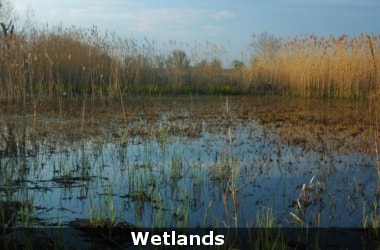 The SC provided major direction to preserve ecologically crucial wetlands threatened by encroachment in many parts of the country. The SC provided major direction to preserve ecologically crucial wetlands threatened by encroachment in many parts of the country.
Supreme Court directed the Centre on 8th Feb 2017 to frame a policy to protect wetlands by June 30.
The court's direction will cover over 2 lakh wetlands across India which were identified through satellite imagery by ISRO.
The Centre has been asked to draw up a phased plan of action to conserve the water bodies.
The Centre is to notify all 2,01,503 wetlands and asked the states to provide details too.
The bench set a deadline of June 30 to frame policy for preservation of wetlands that are seen as effective carbon sinks to mitigate climate change and support a wide variety of arial, land and aquatic wildlife and fauna.
Wetlands are defined as areas of land either temporarily or permanently covered by water.
They play a key role in the hydrological cycle in storm and flood control, water supply, providing food, fibre and raw materials.
They support lakhs of migratory birds from colder regions of the world in summers, apart from mangroves that protect coastlines and filter pollutants.
With wetlands endangered by land grabbing activities, including by initiatives by state and central governments that include releasing lands for commercial development, environmentalists approached the Supreme Court seeking measures to protect the ecosystems.
The SC has been examining the issue since 2001 and passed various orders.
The Centre informed the court it had formed a comprehensive scheme of National Plan for Conservation of Aquatic Eco-systems (NPCA) for conservation and restoration of lakes and wetlands.
The ministry has so far identifies 115 wetlands and 63 lakes in 24 states and 2 union territories for conservation and management under the scheme.
So far, since 1987-88 an amount of Rs 780 crore has been released for undertaking various conservation activities.
Mapping and State-wise Distribution of Wetlands
- ISRO had in 2011 prepared a national wetlands atlas on the basis of satellite image and 201503 wetlands were mapped.
- Total wetland area estimated is 15.26 Mha, which is around 4.63 per cent of the geographic area of the country.
- Area under inland wetlands is 10.56 million hectare and area under coastal wetlands is 4.14 Mha.
- State-wise distribution of wetlands showed that Lakshadweep has 96.12% of geographic area under wetlands followed by Andaman & Nicobar Islands (18.52%).
- Daman & Diu(18.46%) and Gujarat (17.56%). Puducherry (12.88%), West Bengal (12.48%), Assam (9.74%), Tamil Nadu (6.92%), Goa (5.76%), Andhra Pradesh (5.26%), and Uttar Pradesh (5.16%) are wetland rich states.
- The least extents have been observed in Mizoram (0.66%) followed by Haryana (0.86%), Delhi (0.93%), Sikkim (1.05%), Nagaland (1.30%), and Meghalaya (1.34%).
|
▼ Why do plants turn carnivorous? [02-9-17]
 According to new study was published in the journal Nature Ecology and Evolution, scientists have identified the evolutionary pathway that led some plants to turn carnivorous. According to new study was published in the journal Nature Ecology and Evolution, scientists have identified the evolutionary pathway that led some plants to turn carnivorous.
The new finding explains why pitcher plants (carnivorous plants) from different parts of the world appear strikingly similar despite having evolved independently.
Pitcher plants or carnivorous plants grow in very nutrient-poor habitats.
Just like other plants, they produce carbon through the usual photosynthetic processes.
However, their habitats do not provide enough phosphorus and nitrogen for their growth. They obtain these essential nutrients feeding on insects.
These plants capture insects by luring them into a trap, a cupped leaf with a waxy, slippery interior that makes it difficult to climb out.
A blend of digestive fluids sits at the bottom of cupped leaf’s chamber that breaks down the flesh and exoskeletons of prey.
The study had probed the origins of carnivory in several distantly related pitcher plants from Australia, Asia and America, which appear strikingly similar to the human eye.
Though, each species of the pitcher developed carnivory independently, scientists concluded that the biological machinery required for digesting insects evolved in remarkably similar fashion.
The similarity for has long been known to be an example of convergent evolution in which distinct species independently develop the same traits.
These plants have a genetic tool kit so they look similar, with a cupped, waxy leaf that is slippery on the inside to trap insect inside.
During the course of their evolution, digestive fluid of these plants co-opted for proteins that were originally used to defend against disease, and repurposing them into enzymes that could aid the digestion of insects.
These plants have enzymes basic chitinase, which breaks down chitin the major component of insects’ hard, exterior exoskeletons and purple acid phosphatase.
This enables them to obtain phosphorus, a critical nutrient, from victims’ body parts.
|
▼ Neurocalyx calycinus: A herbal plant to cure cancer! [02-8-17]
 A medicinal plant endemic to the southern parts of Western Ghats and Sri Lanka could offer scientists the key to new herbal formulations. A medicinal plant endemic to the southern parts of Western Ghats and Sri Lanka could offer scientists the key to new herbal formulations.
It could also pave the way for modern drugs for the treatment of cancer and wounds and burns.
Scientists at the Jawaharlal Nehru Tropical Botanic Garden and Research Institute (JNTBGRI) here have confirmed the multiple therapeutic properties of Neurocalyx calycinus.
This herb used by the Cholanaickan tribe, one of the particularly vulnerable groups in Kerala, to treat inflammations and wounds.
The researchers have filed for a patent on a novel herbal drug formulation possessing wound-healing, burn-healing, anti-cancer, analgesic, anti-inflammatory, immuno- enhancing, platelet-augmentation and anti-oxidant effects.
The scientists came to know of the miracle plant in 1988 during a biological survey deep inside the Nilambur forests.
Neurocalyx calycinus is known as pacha chedi in local language.
Animal trials have proved that the leaves of N.calycinus possess wound-healing properties comparable to the standard drug Povidone/ Iodine in the early phase of inflammation.
The anti-inflammatory activity of the leaves was found comparable to the drug diclofenac sodium.
The pre-clinical trials confirmed the therapeutic effects of N.calycinus against burn wounds and pain, besides its immuno-enhancing, platelet augmentation, and anti-oxidant potential.
The presence of high Vitamin E content and potent cytoprotective activity in cell lines in the plant species have also enhanced the prospects of developing an anti-cancer drug.
In a presentation that won the best paper award at the Kerala Science Congress, Aneesh kumar AL, a researcher, said the work had thrown up promising leads for the development of novel herbal formulations and modern medicines.
Pada Chedi: Know More
- Neurocalyx calycinus is a shrub endemic to South West India.
- It is found in evergreen forests.
- Recent researches suggests this plant has wound-healing, burn-healing, anti-cancer, analgesic, anti-inflammatory.
- Genus: Neurocalyx
- Order: Gentianales
- Rank: Species
|
▼ Vaquita Marina, world's smallest porpoise, closer to extinction [02-3-17]
 International Committee for the Recovery of the Vaquita has warned Mexico's vaquita marina is edging closer to extinction. International Committee for the Recovery of the Vaquita has warned Mexico's vaquita marina is edging closer to extinction.
Only 30 were left despite efforts to intercept illegal fishing nets destroying the world's smallest porpoise.
Following the current rate of loss, the vaquita will decline by 2022 until the current gillnet ban is maintained and enforced effectively.
Previous census between September and December 2015 had found around 60 vaquitas.
There were 200 of them in 2012 and 100 in 2014.
A large fish called totoaba is frequently the prey which is targeted and in whose fishing nets, the vaquitas are inadvertantly caught.
Totobas are eaten in soup in China where they are sold for thousands of dollars.
The porpoise is also known as the panda of the sea because of the dark rings around the eyes.
This cretacian is 5 feet in length.
The vaquitas currently exist in the Gulf of California only.
Vessels, small aircrafts, and dolphins trained by the US Navy could also be used to locate vaquitas.
President Enrique Pena Nieto deployed the navy in 2015 to stop illegal fishing, increased the vaquita protection area and imposed a two-year ban on gillnets. Drones joined the effort in 2016.
There have been calls for permanent ban on all gillnets and that their sale or possession on land in the vaquita region be made illegal. Also more vigorous efforts to prosecute totoaba smulggers or anyone connected with illegal fishing are on.
|
▼ Ireland: First country to divest from fossil fuels completely [02-2-17]
 Ireland has become the world’s first country to completely divest from fossil fuels. Ireland has become the world’s first country to completely divest from fossil fuels.
With respect to this, Irish Parliament passed legislation that will drop coal, oil, and gas (fossil fuel) investments from its $8.56 billion Ireland Strategic Investment Fund.
Once enacted, the bill will force the Ireland Strategic Investment Fund to sell its investment in fossil fuel industries over the next five years.
Earlier in 2015, Norway’s sovereign pension fund had divested from some fossil fuel companies, but not fully.
Fossil Fuels: Know More
- Fossil fuels are fuels formed by natural processes.
- This is such as anaerobic decomposition of buried dead organisms.
- This is containing energy originating in ancient photosynthesis.
- The age of the organisms and their resulting fossil fuels is typically millions of years.
- Fossil fuels contain high percentages of carbon and include petroleum, coal, and natural gas.
- Other commonly used derivatives include kerosene and propane.
- The theory that fossil fuels formed from the fossilized remains of dead plants was first introduced by Georgius Agricola in 1556.
|
▼ 100 natural world heritage sites damaged by human infra [02-1-17]
 Most of the over 100 natural World Heritage sites that are being severely damaged by expanding human infrastructure and land use are in Asia. Most of the over 100 natural World Heritage sites that are being severely damaged by expanding human infrastructure and land use are in Asia.
This is as per a new study.
India's Manas Wildlife Sanctuary and Nepal's Chitwan National Park are among the most impacted Natural World Heritage Sites (NWHS).
Urgent intervention is clearly needed to save these places and their outstanding natural universal values.
Natural World Heritage Sites (NWHS), via the formal process run by UNESCO (United Nations Educational, Scientific and Cultural Organisation), are globally recognised.
This are considered as containing some of the Earth's most valuable natural assets.
The authors looked at human pressure over time using the updated global Human Footprint criteria, which includes roads, agriculture, urbanisation industrial infrastructure, and deforestation/ forest loss.
They found that the Human Footprint has increased in 63 per cent of Natural World Heritage Sites (NWHS) across all continents except Europe over the past 20 years.
The most impacted NWHS were found in Asia.
Even celebrated places like Yellowstone National Park in the US were impacted, losing some six per cent of its forests.
Waterton Glacier International Peace Park that crosses the Canadian and USA border lost almost one quarter of its forested area (23 per cent or 540 km2).
|
| Chronology of events |
|
Sweden has committed to completely phase out greenhouse gas emissions by 2045 and called for all countries – including the US – to “step up and fulfil the Paris Agreement”.
|
|
The Central Wetlands Regulatory Authority (CWRA) - a nodal agency to coordinate with multiple stakeholders in the country for conservation and sustainable management of wetlands - is to get three years extension beyond February 13.
|
|
Air quality index in Gurugram touched the 356-mark on Monday, surpassing 28 other cities in terms of pollution again. The other severely polluted cities were Muzaffarpur, Haldia, Lucknow, Agra and Varanasi.
|
|
A powerful Pacific storm blew into Southern and Central California with wind-driven heavy rains that downed power lines and electrocuted a man, stranded others in flooded areas and disrupted hundreds of flights at airports.
|
|
CM Raghubar Das announced on 26 February 2017 that his government would soon ban the use of polythene bags in the State. The announcement was made by the Chief Minister after laying the foundation of Navjeevan
|